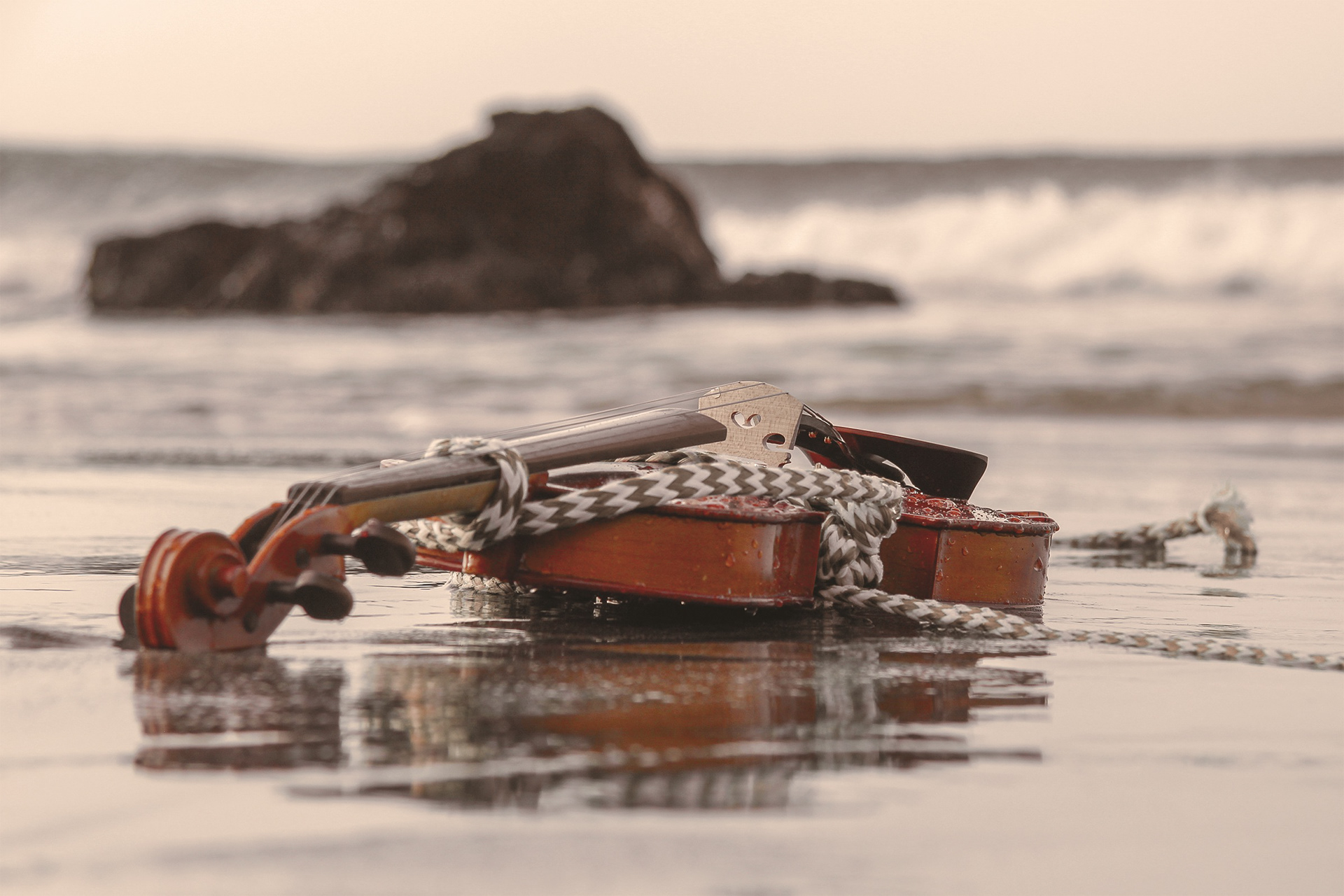



"In this limited-edition book of performance scores, Rawlings’s coastal performances, including instructions on how to knit plastic collected from the shoreline, are touching and timely, providing intimate responses to global environmental problems." — Elizabeth-Jane Burnett, The Sunday Times
Sound of Mull is a series of performance scores developed through artistic practice-as-research into how to perform geochronology in the Anthropocene—the proposed new epoch in which humans act as geologic forces—along North Atlantic foreshores. The book includes instructions in how to listen to deep time, how to drown a violin, and how to knit plastic collected from shorelines, providing an evocative and engaging journey into rethinking foreshores.
rawlings' research was undertaken through PhD study at the University of Glasgow from 2015 to 2019, courtesy of a Lord Kelvin Adam Smith Scholarship. As a geochronological dénouement, the proposed geological epoch of the Anthropocene may indicate the figural moment in geologic time when human activity inscribed itself into sediment across the planet.
Climate change places foreshores as central players impacted by storminess, glacial melt, rising sea levels, and ocean acidification. The performance scores offer direct or imagined engagement with the multiple temporalities and more-than-human co-constituents of North Atlantic foreshores. Performance sites featured in Sound of Mull include Denmark, Iceland, Norway, Scotland, and Sweden.
Launch date: May 2019
Published by Laboratory for Aesthetics and Ecology
Limited edition: 300 copies
128 pps
LAUNCH Sound of Mull launched at Sea Loft in Kinghorn, Scotland on May 18, 2019. This date was chosen to coincide with the full moon. The event included a screening of the in-situ video “Intime.” angela, Halla Steinunn Stefánsdóttir, and Maja Jantar performed excerpts from Sound of Mull using voice and violin. Between 8:30 and 9:30pm, attendees were invited to participate in a performance of “Intime” on Kinghorn’s foreshore at low tide. Low tide was at 21:16, and sunset was at 21:24; the closing performance finished as the sun set.